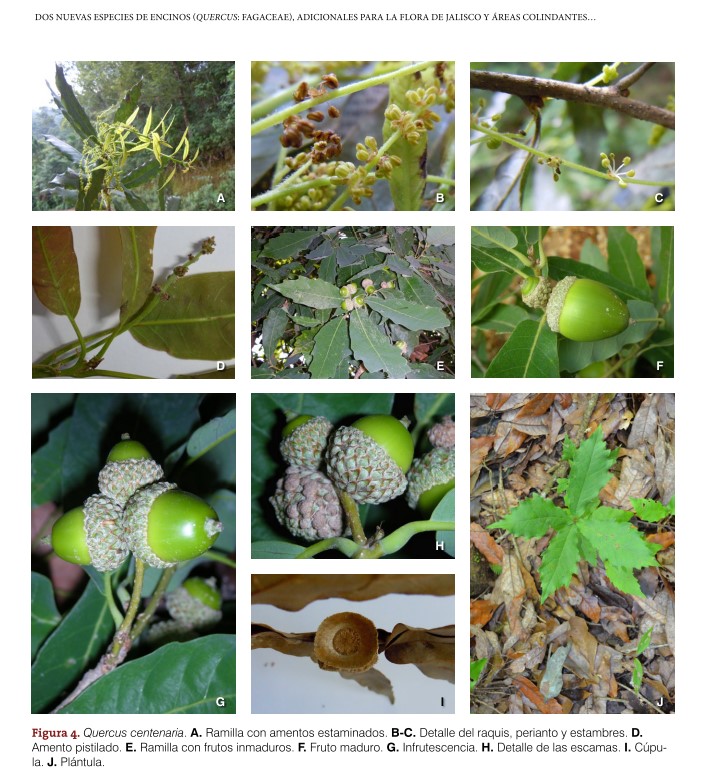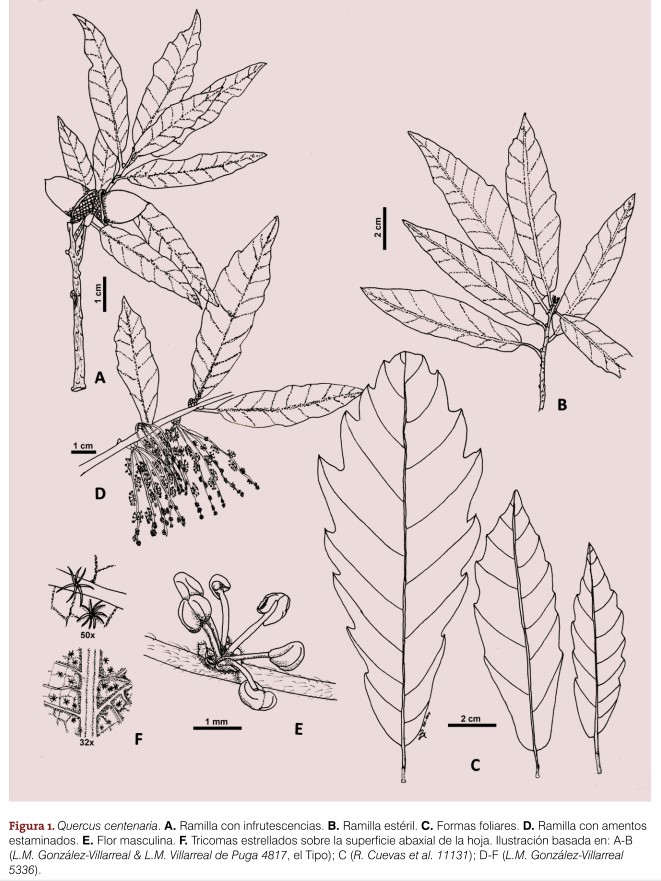| Quercus centenaria | |
| Author | L.M. González 2018 Ibugana, vol. 9, p. 47-71, 29 Oct. 2018 |
| Synonyms | |
| Local names | encino borneo, encino bornio, |
| Range | West Mexico (Jalisco, Nayarit); 100-2250 m; |
| Growth habit | 20-30 m; buttressed trunk, to 1.20 m in diameter; |
| Leaves |
8-22 cm x 3-8; evergreen; subcoriaceous; more or less narrowly elliptic, or oblanceolate to lanceolate; apex acute to acuminate, sometimes obtuse; base narrow, rounded or subcordate, often oblique, sometimes cuneate; margin slightly thickenned, undulate, entire or with 2-8 teeth or mucronate lobes in apical half, sometimes in the whole margin; adaxially lustrous, papillose, with some scattered, stellate, 4-10 rayed hairs, becoming glabrous except on the midrib; abaxially tawny pruinose, papillose, with scattered stellate and acicular trichomes, then glabrous; (6)10-15(20) veins pairs, impressed above; petiole 1.5-2.5 cm long, more or less glabrous; |
| Flowers | in June; 3-7 male flowers on a 6-12 cm long, glabrescent rachis; perianth campanulate, yellow-brown, sometimes purplish, sessile; 5-8 stamens with hairy anthers; female flowers at leaves-axils, 2 to 5 together, with 3 stigmas 1.5 mm long; |
| Fruits | acorn long-ovoid,2-2.5 cm long, truncate at base, brown, then glabrous; solitary or to 5 together on 2-5 cm long peduncle; enclosed 1/3 or less in the cup; cup shallow, with a thin rim, 15-20 mm in diameter, pale brown, on a 3-8 mm long pedicel; cupscales triangular, round at apex, ciliate at margin; maturing in one year, from August to October; |
|
Bark, twigs and |
greyish bark, fissured into square plates; twigs slender, 1,5-3 mm thick, pale brown, glabrous; small conspicuous lenticels; buds ovoid, brown, 1.5-3.5 mm long, with lustrous, hairless scales; stipules persistant around the terminal bud. |
| Hardiness zone, habitat | |
| Miscellaneous |
-- Sub-genus Quercus, Section Quercus, Series Leucomexicanae;
|
| Subspecies and varieties |
|
| Pictures |
|

